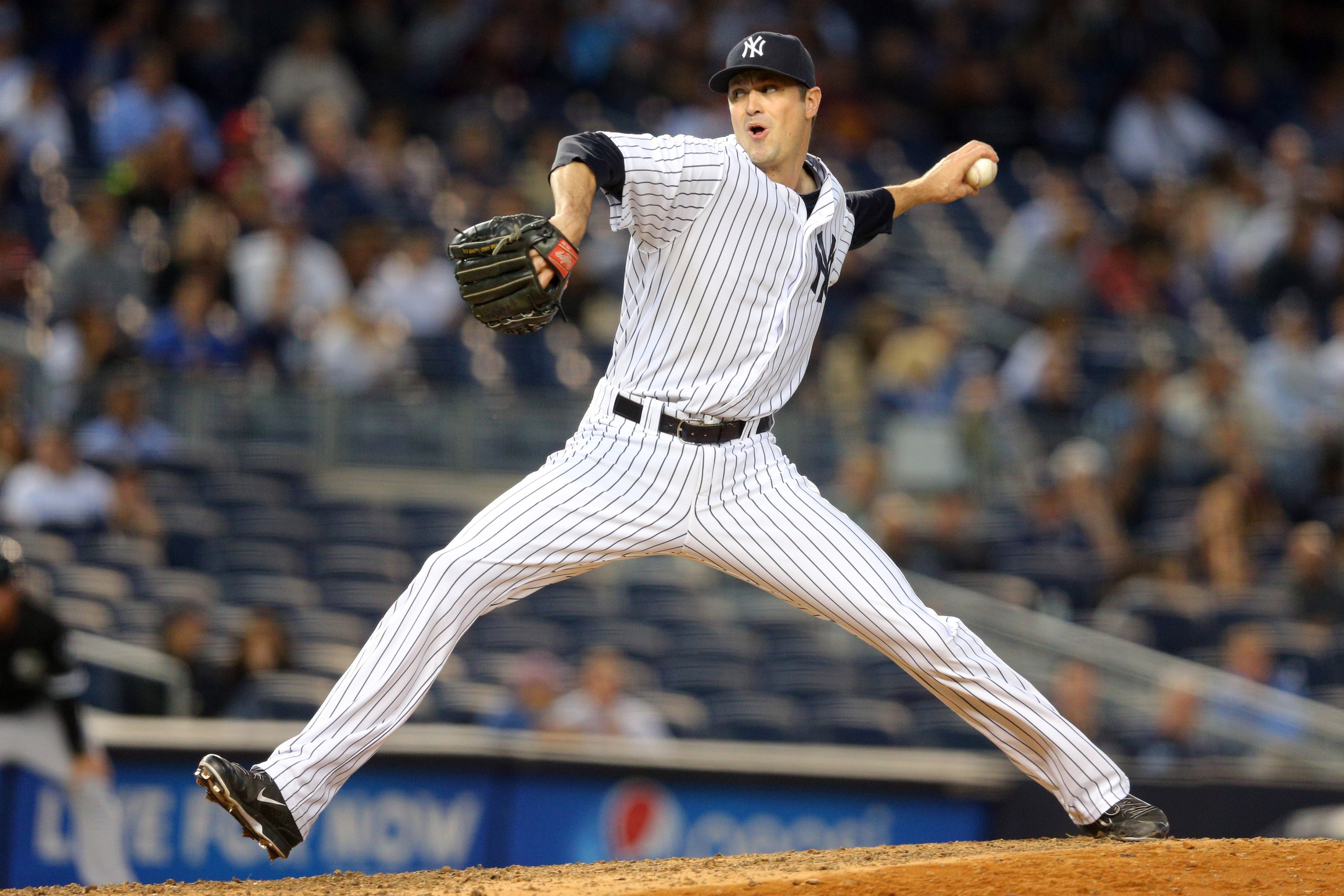The MLB hot stove hasn’t quite kicked into full gear, but as we await the fall of the large dominoes, the New York Yankees are making headlines.
Although the Jose Pirela and JR Murphy trades are not earth-shattering, they are getting the ball rolling. More interesting are the rumors in circulation about Brett Gardner and Andrew Miller. Trading Gardner is a bit tricky because he’s paid approximately market value, so choosing to acquire him means believing talents like his are unavailable on the free-agent market and worth paying for in player assets due to their scarcity.
Less difficult to understand is the idea of a team wanting to bring in Miller as he would be a massive upgrade on literally every team. No one has seven relievers better than Miller, nobody has two, and only a couple of teams have one. His contract—which seemed extravagant but fair at the time—is now looking more like a bargain in wake of another dominant season. Not only is he paid $10 million less than David Robertson over the course of his four-year deal he’s essentially been Aroldis Chapman over the last two years, statistically if not stylistically.
| Pitcher | IP | K% | BB% | K-BB% | ERA- | FIP- | xFIP- |
|---|---|---|---|---|---|---|---|
| Chapman | 120.1 | 46.2% | 11.9% | 34.4% | 46 | 37 | 50 |
| Miller | 124 | 41.6% | 7.6% | 34.0% | 49 | 46 | 46 |
He strikes out fewer batter, but walks fewer to the extent it’s essentially a wash as the K-BB% shows. The main difference here is the FIP which is due to Chapman allowing fewer home runs, but Miller’s xFIP is better demonstrating that luck could be a major factor in that disparity. You can bet your bottom dollar that Chapman will receive more than $9 million annually when he becomes a free agent, so teams are better off targeting Miller.
To review, Miller is incredibly talented, a fit for any team, reasonably compensated, controlled for three more years, and right now the baseball zeitgeist couldn’t be more pro-relief ace. It’s a copycat league and the most attainable way to replicate the Kansas City Royals model is with an unhittable back of the bullpen. While contact hitting will also be popular in the offseason to come, the Royals offensive success was arguably more clutch-driven than contact-driven. Miller could be the kind of piece that helps a team build a Royals-caliber relief core.
This is an interesting set of circumstances for Brian Cashman. He knows that he could get a king’s ransom for Miller and he also knows that relievers break all the time and Miller’s outlook could change radically in a short period of time.
On the flip side the Yankees are an older, more win-now outfit than most. Shipping out Miller would undermine their chances in 2016 even if Betances slides into the closer role. The strength of the team’s bullpen is that they shut down the eighth and ninth innings of games, not that the “good closer” box is checked on their roster construction to-do list.
When it comes down to it, Miller is a unique-ish player. There aren’t a lot of true-talent two-win relievers out there and even the term “two-win” likely understates his value as WAR doesn’t capture relievers that well. Whether you’re willing to part with him depends not only on the offers, but where you see this team in the near term.
It’s easy to say “I’d part with X player if the deal was good enough” because of course you would. It’s not insight to say you’d do something that benefits you in abstract terms. No one is saying “I’d wait for an offer for Miller to be so good I’d be stupid to refuse and then I’d say no.” The real question is whether this is the time to make the dominant southpaw available.
On one hand the AL East is not out of reach, especially with the Toronto Blue Jays in pretty dire straits rotation-wise. However, a general manager’s job a lot of the time is to think long term. The current Yankees need some re-tooling. Miller shouldn’t be shipped for 18-year-old Single-A pitchers necessarily, but quality, near MLB-ready prospects are some of the most valuable assets in the game and Miller could fetch a couple. Or he could bring in a pre-arb player or two. The market is so vast and he’s such a valuable piece that the return is hard to speculate on just yet.
Considering how competitive the Yankees plan to be in 2016, it doesn’t feel like the right time to trade Miller, but even though he’s been god-like in pinstripes, he’s just a man—and a reliever at that. Now is a perfect time to cash in. Selling high is almost never the wrong move, even if it can be a painful one.
Lead photo courtesy of Brad Penner-USA TODAY Sports

If the cashman could get a solid return id be all for it. Kimbrel just neted the padres 4 nice minor league pieces. Kimbrel is younger with less workload on his arm, not to mention Millers slider screams TJ at some point. But Miller has actually had the better peripheral numbers over the last couple of years. On top of that he has an extra year of team control and is a couple million cheaper so i think the yankees could get a very similar return. Id be happy with the deal if we could get a good near mlb ready middle infield prospect and a good near mlb ready staring pitching prospect. That along with two decent lottery ticket type prospects or one more highly regarded low level chip makes for a fair return. The team could also hope he has a healthy/dominant first half and see if they could get an even better haul come the trade deadline.